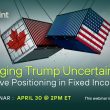The Perils of Prophecy
by J. Bradford DeLong, via Project Syndicate
BERKELEY – We economists who are steeped in economic and financial history – and aware of the history of economic thought concerning financial crises and their effects – have reason to be proud of our analyses over the past five years. We understood where we were heading, because we knew where we had been.

In particular, we understood that the rapid run-up of house prices, coupled with the extension of leverage, posed macroeconomic dangers. We recognized that large bubble-driven losses in assets held by leveraged financial institutions would cause a panicked flight to safety, and that preventing a deep depression required active official intervention as a lender of last resort.
Indeed, we understood that monetarist cures were likely to prove insufficient; that sovereigns need to guarantee each others’ solvency; and that withdrawing support too soon implied enormous dangers. We knew that premature attempts to achieve long-term fiscal balance would worsen the short-term crisis – and thus be counterproductive in the long-run. And we understood that we faced the threat of a jobless recovery, owing to cyclical factors, rather than to structural changes.
On all of these issues, historically-minded economists were right. Those who said that there would be no downturn, or that recovery would be rapid, or that the economy’s real problems were structural, or that supporting the economy would produce inflation (or high short-term interest rates), or that immediate fiscal austerity would be expansionary were wrong. Not just a little wrong. Completely wrong.
Of course, we historically-minded economists are not surprised that they were wrong. We are, however, surprised at how few of them have marked their beliefs to market in any sense. On the contrary, many of them, their reputations under water, have doubled down on those beliefs, apparently in the hope that events will, for once, break their way, and that people might thus be induced to forget their abysmal forecasting track record.
So the big lesson is simple: trust those who work in the tradition of Walter Bagehot, Hyman Minsky, and Charles Kindleberger. That means trusting economists like Paul Krugman, Paul Romer, Gary Gorton, Carmen Reinhart, Ken Rogoff, Raghuram Rajan, Larry Summers, Barry Eichengreen, Olivier Blanchard, and their peers. Just as they got the recent past right, so they are the ones most likely to get the distribution of possible futures right.
But we – or at least I – have gotten significant components of the last four years wrong. Three things surprised me (and still do).
Continue Reading this article
J. Bradford DeLong is Professor of Economics at the University of California at Berkeley and a research associate at the National Bureau for Economic Research. He was Deputy Assistant US Treasury Secretary during the Clinton Administration, where he was heavily involved in budget and trade negotiations. His role in designing the bailout of Mexico during the 1994 peso crisis placed him at the forefront of Latin America’s transformation into a region of open economies, and cemented his stature as a leading voice in economic-policy debates.












